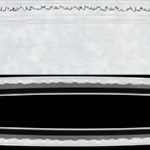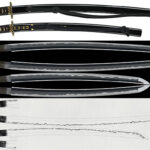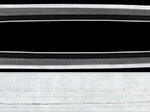Ordering number:14723
Katana in Shirasaya
At Aoi Art, we categorize swordsmiths' works into Saijyo Saku, Jyojyo Saku, Jyo Saku, and Regular Saku.
This sword is ranked as Jyo Saku for the work of Bizen no Suke Fujiwara Munetsugu.
Polished
Habaki: Silver single Habaki.
Blade Length: 70.3 cm (27.68 in)
Curvature: 1.8 cm (0.71 in)
Mekugi holes: 2
Width at base: 3.05 cm (1.20 inches)
Width at tip: 2.59 cm(1.02 inches)
Thickness: 0.52 cm(0.20 inches)
Sword Weight: 755 g
Era: Late Edo period.
Shape: The blade is wide and thick with moderate curvature, featuring an extended kissaki (tip), giving it an elegant appearance.
Jigane: The grain is tight ko-itame, resulting in a smooth, plain surface.
Hamon: The temper line consists of fine nie crystals, with a deep nioiguchi, forming a gunome midare pattern. The boshi is irregular and turns back into the blade.
Features: Bizen no Suke Fujiwara Munetsugu (also known as Koyama Munetsugu) was born as the third son of Koyama Munetoshi in Shirakawa, Mutsu Province, and went by the name Munebei. He became a swordsmith under the patronage of the Shirakawa Matsudaira family, and later relocated to Kuwana following his lord. In 1831, he moved to Edo, where he continued making swords. He was reputedly quite famous even at the time, and in 1845, he received the honorary title of Bizen no Suke. According to the Toko Jiten (Swordsmith Dictionary) by Fujishiro, Munetsugu lived in Nagasaka, Azabu, and later Yotsuya Saemoncho, where he studied cutting techniques under Yamada Asaemon. There is an anecdote that when the renowned smith Minamoto Kiyomaro opened his shop in Yotsuya, he did not greet Munetsugu, which led to a challenge being issued. This incident is often cited as an example of the competitive spirit among swordsmiths at the time. Munetsugu's works were highly regarded, known for their sharpness, and were frequently ordered by samurai of the period. It is said that none of his works had significant flaws, and his consistency in producing flawless swords is highly praised. His reputation for crafting excellent cutting swords, often bearing cutting test inscriptions, speaks to his mastery.
Aoi Art’s Comment: Unfortunately, this particular sword is a forgery.
Aoi Art Appraisal Paper
Whole Oshigata
*Please note: The price does not include shipping fees.
Price:350,000JPY
Order Form
Related Items:
 Katana : Bizen Suke Munetsugu Saku Kore
Katana : Bizen Suke Munetsugu Saku Kore
 Katana:Bizen Suke Fujiwara Munetsugu Keio Gannen Hachigatsu Hi (August, 1865)(NBTHK Tokubetsu Hozon Token)
Katana:Bizen Suke Fujiwara Munetsugu Keio Gannen Hachigatsu Hi (August, 1865)(NBTHK Tokubetsu Hozon Token)
 Katana: Bizen Suke Fujiwara Munetsugu(NBTHK Tokubetsu Hozon Token)
Katana: Bizen Suke Fujiwara Munetsugu(NBTHK Tokubetsu Hozon Token)
 Dai Sho : Motohira(Dai Sho:NBTHK Tokubetsu Hozon Token)(Daisho Koshirae: NBTHK Tokubetsu Hozon Tosogu)
Dai Sho : Motohira(Dai Sho:NBTHK Tokubetsu Hozon Token)(Daisho Koshirae: NBTHK Tokubetsu Hozon Tosogu)
 Katana:Oku Shirakawa Ju Koyama Munetoshi(NBTHK Hozon Token)
Katana:Oku Shirakawa Ju Koyama Munetoshi(NBTHK Hozon Token)
 Katana: Hizen Koku Ju Omi Daijo Fujiwara Tadahiro (NBTHK Tokubetsu Hozon Token)
Katana: Hizen Koku Ju Omi Daijo Fujiwara Tadahiro (NBTHK Tokubetsu Hozon Token)






